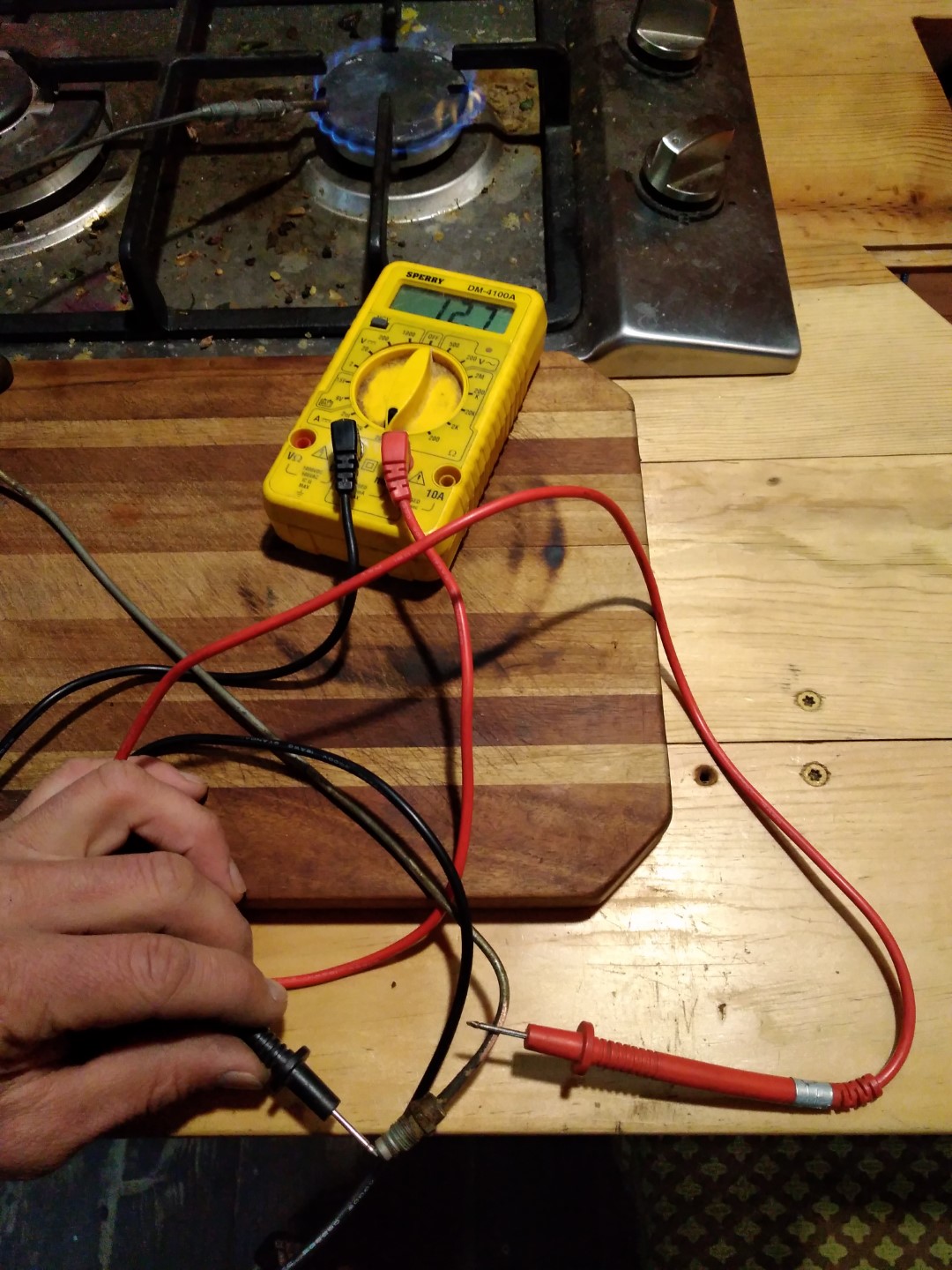I am currently working on diagnosing the functionality of a thermocouple from a vintage gas stove, whose safety valve does not stay open with the pilot light heating the hot end of the thermocouple.
The valve is fairly encrusted with grease, yet this resistance would seem to assist the thermocouple after opening the valve manually. The goal at the moment is assessing whether the thermocouple is functioning electrically to determine whether this component needs replacement or repair.
This is also a question of reading incongruous values when measuring milliamps. As for voltage, when exposing the hot end to flame with the probes connected to the copper sheath and cold end, the device produces a maximum of roughly 15 - 20 mV.
With the meter configured for mA values, the readout is 0.211 in the '2m' position and 12.7 in the 200m position. I want to say the thermocouple is producing 211 mA but I would think the '200a' setting would increase the value by two orders of magnitude but it also cuts the value down 60%. I would like to know the precise current here and do not know to rectify these two numbers.
Essentially I am trying to discern if these values are typical while suspecting the valve or if they are low and indicate a failed thermocouple. I think a sticky valve would assist a thermocouple in keeping the valve open after manual engagement.




